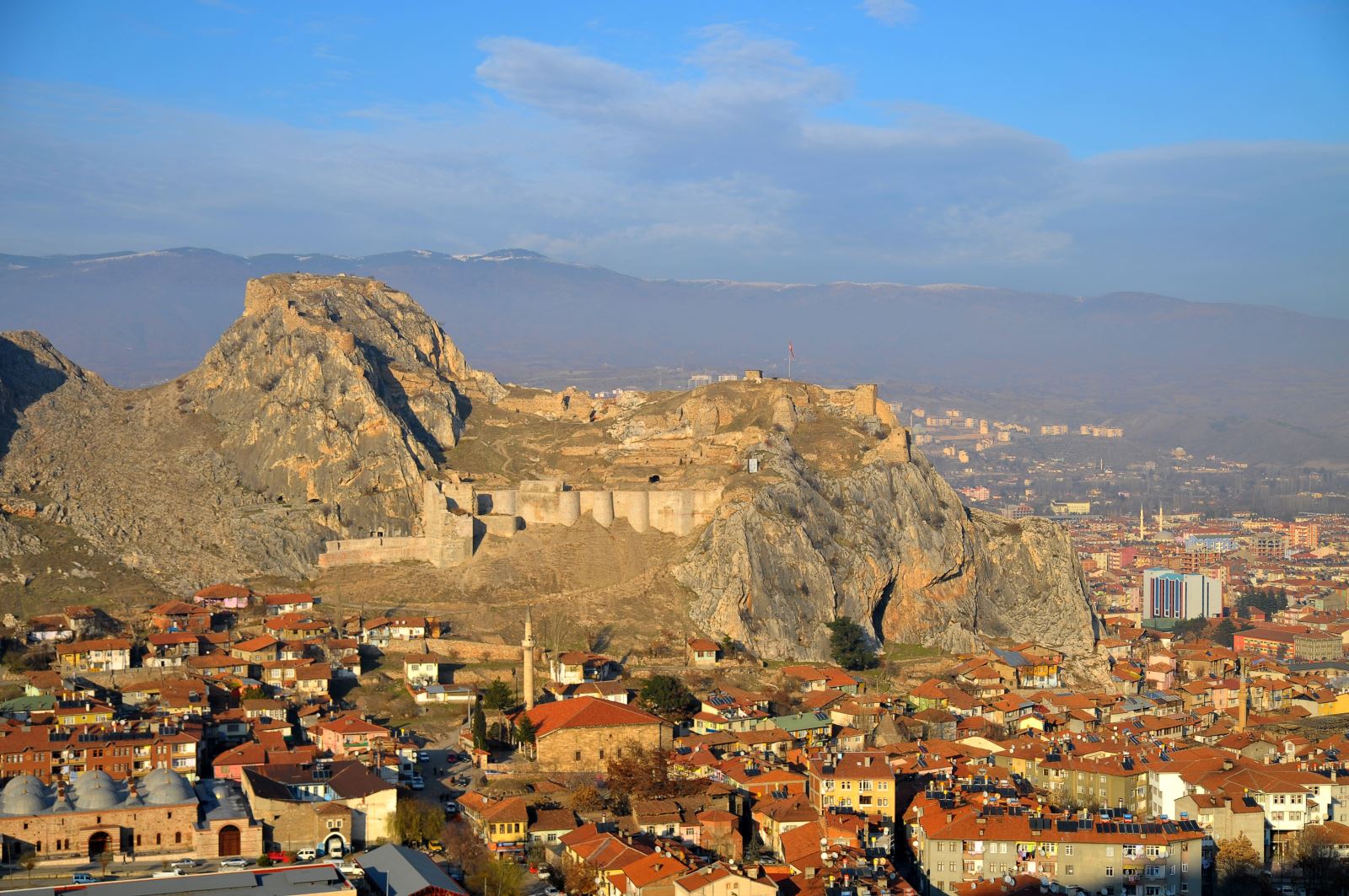Tokat Castle is a defensive structure located in the city center of Tokat province in Türkiye’s Black Sea Region, built atop steep and rugged rocky cliffs. The castle resembles a natural fortress and stands out due to its strategic location. On the rocky slope to the southwest, there is an ancient rock tomb and a staircase consisting of 362 steps. This staircase reaches down to the foot of the castle and is largely open today. Currently, the castle is closed to visitors due to structural safety concerns.

Tokat Castle (Türkiye Kültür Portalı)
Historical Background
The castle was constructed during the Roman Period (30 BC – 395 AD) to secure the safety of roads. It remained under Byzantine control for about 500 years until it was captured in 1074 by Danişmend Melik Ahmet Gazi. Subsequently, the castle passed through the hands of the Danişmends, Seljuks, Ilkhanids, Eratnas, Kadı Burhanettin, and finally the Ottoman Empire. The location of the castle is strategic for controlling the Yeşilırmak valley, and it was used as a military observation point to monitor troop movements in the region.
Dungeon and Prisoners
During the Ottoman era, the castle’s dungeon, known as “Çardak-ı Bedevi,” was used to imprison important local and foreign figures. Among these prisoners was the Byzantine Emperor Andronikos Diogenes. The interior of the dungeon was carved out of natural rock and is notable for its dark and humid atmosphere.
III. Vlad (Vlad the Impaler) and the Castle
III. Vlad, the Wallachian prince known as Vlad the Impaler (Dracula), who was defeated by the Ottomans, was held under surveillance here along with his brother. They were first kept in Eğrigöz Castle in Kütahya and later in Tokat Castle. Subsequently, Vlad was sent to Edirne to be educated under the supervision of Prince Mehmet (later Sultan Mehmed the Conqueror).
Archaeological Features
To the southwest of the castle, there is a rock tomb dating back to very ancient times. The tomb’s entrance has one column and two chambers, one of which is larger. The rock tomb and the stairway passage demonstrate that the castle had not only military but also social and archaeological significance. Archaeological evaluations suggest that the tomb structure may belong to the Hellenistic or Roman period.


